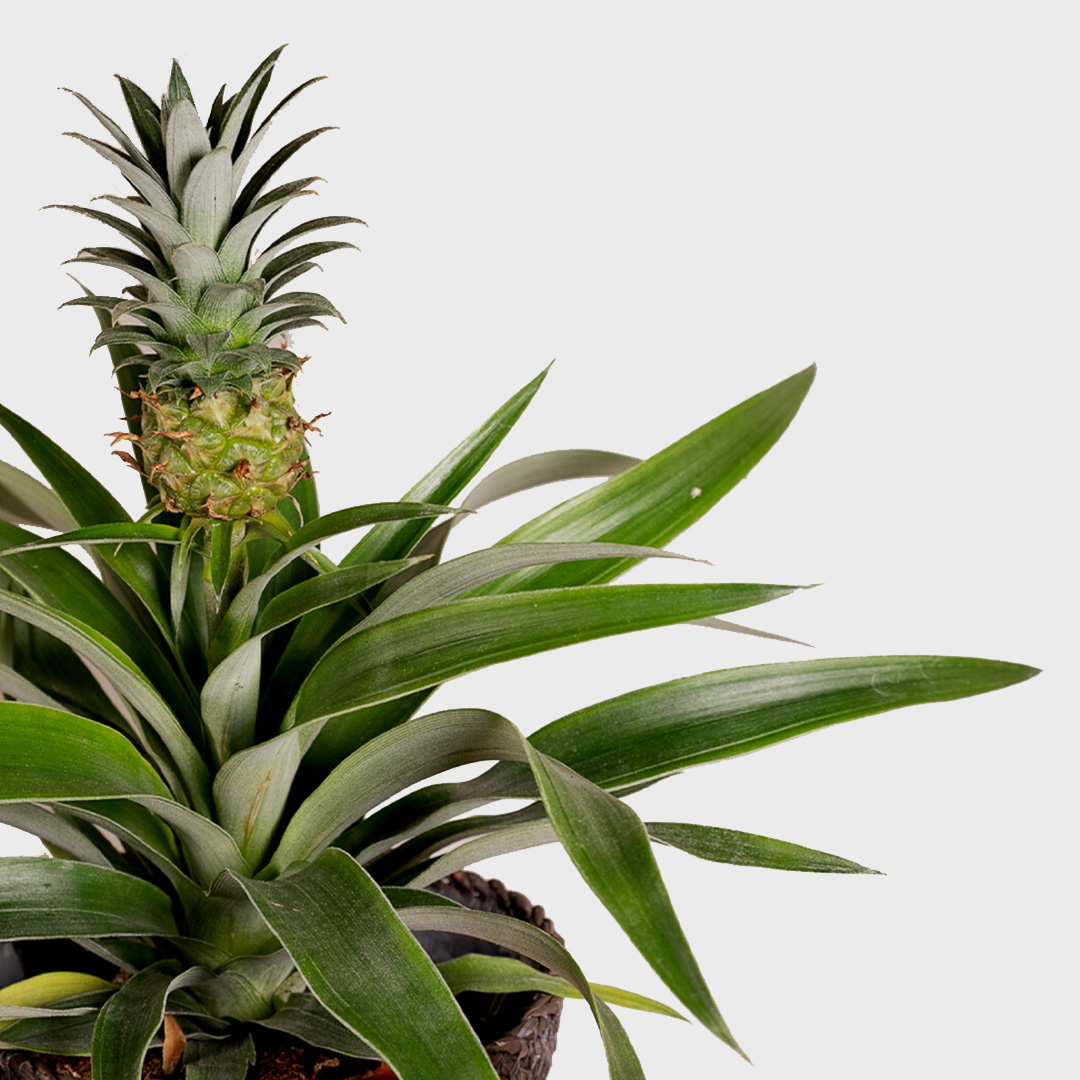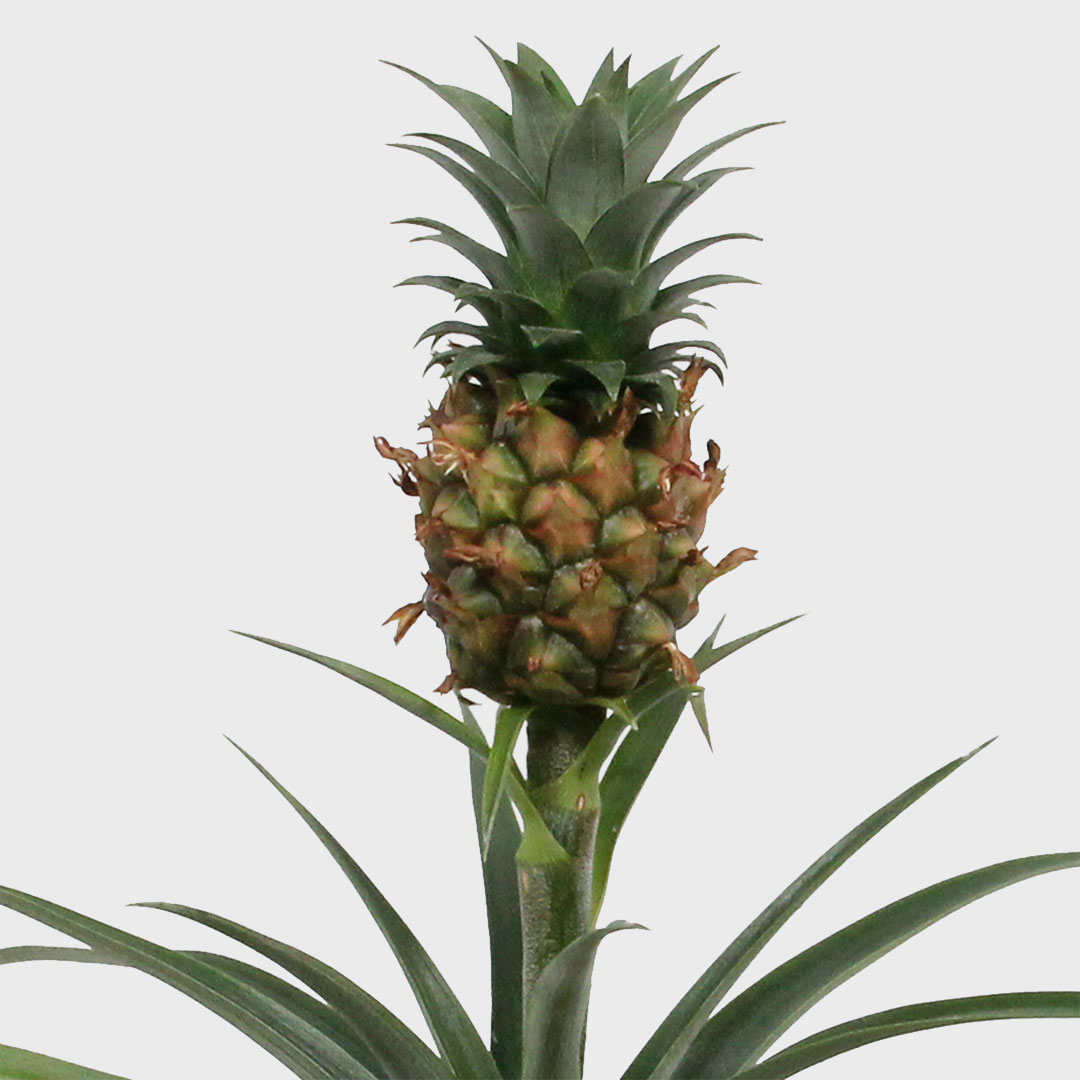
Deliver to
Germany
 English
English

Pineapples may not be enjoyed by everyone, but as plant decorations, they're loved by many. The pineapples grown on indoor Bromelia Ananas aren't edible, but they exist purely for ornamental purposes. These are smaller in size and emerge from the middle of the plant.
The pineapple will eventually move past its date, and new baby plants will produce new pineapples. Their foliage is beautiful to look at with green and yellow stripes and is perfect for brightening indoor spaces.
Medium light
Water once a week
Non-Toxic
Air-purifying
Pineapple plants adore light. Bright, indirect light is ideal for its growth. You can place it in front of an east- or west-facing window or at least 2 meters away from a south-facing window. If the Pineapple plant gets too much light, the leaves will turn dark green or will be elongated.
Water the Pineapple plant once every week by filling the cup with water. This is enough to quench the entire plant’s thirst. Never allow the plant to sit in water for too long, because it may result in root rot and build-up salts. It is best to water the Pineapple plant every 5 days in summer, and every 10 days in winter.
Plant nutrition is not necessary for Pineapple plants. Pineapple plants have a short life span and therefore only need the nutrients in the potting soil.
It is only necessary to repot the Pineapple plant if it is a specie with a longer lifespan. Most Pineapple plant die as soon as their fruit has finished flowering.
Repotting the Pineapple plant is necessary every year. Repotting the plant every year gives it new nutrients and more room for root growth. The airier soil is also very good for the water flowing through. The best period to repot is spring.
The most ideal temperature for a Pineapple plant is typically between 21 to 29 degrees Celsius. It prefers a warm and tropical climate with moderate humidity.
Pruning a Pineapple plant is not necessary for its fruit production. However, removing dead or yellowed leaves, helps maintain the plant's appearance and directs energy towards fruit development. Additionally, removing old or spent pineapple fruit promotes new growth and encourages the plant's vitality.
If the air is too dry, the Pineapple plant can suffer from spider mites. To prevent spider mites, it is best to use the plant sprayer once a week. Spider mites are an infection of mites on plants. You can recognise the infection by infected leaves and a kind of cobwebs. If you have come across spider mites, it is best to place the plant outside. Wind and moisture from outside will quickly keep the spider mite away.


In general, a Pineapple plant lasts a maximum of 6 months. This is because the plant usually dies after it has finished flowering. Luckily, there are ways to enjoy a Pineapple plant for longer: propagation.
Propagating a Pineapple plant is easy. Read more about the propagation of Pineapple plants.
Pineapple plants unfortunately only flower once. After they have finished flowering, the plant dies.
Pineapple plants remain quite small. As an indoor plant, the leaves of the Pineapple Plant only grow to 30 cm in length.
A pineapple plant is a real ornamental plant. It is possible to consume the pineapple, but the pineapple is actually not meant for consumption. The taste will be less than a pineapple from the supermarket.
Like many other indoor plants, the Pineapple plant has an air-purifying function. The great advantage of the Pineapple plant is that it starts its work at night. Pineapple plants open their stomata at night to convert CO2 into oxygen. This extra oxygen could therefore be an advantage against snoring. But, we have to be honest. It is and remains an indoor plant, not a magic cure. ;)